We’re all fish! That statement may sound silly, but if you were to go back some 375 million years (some 100 million generations, give or take a few), you’d find our ancestors just starting to venture out of water onto land. We know this because several fossils from around this time show a transition from fish with fins living their entire life in water to four-legged animals able to come out completely on land (called “tetrapods” for having four feet). Tiktaalik roseae is the star fossil of this water-to-land transition.
Although discovered in the Canadian Arctic, Tiktaalik’s habitat when it was alive (the Late Devonian Period) was a warm, freshwater forest. The name Tiktaalik actually means “large freshwater fish” in Inuktitut, one of the Inuit languages spoken in the Nunavut territory where Tiktaalik was discovered. Tiktaalik had the scales, fins, and gills of a fish. But its eyes were positioned more on the top of its head for venturing out of the water and its limbs were also robust enough to push off the ground. In other words, Tiktaalik was our first ancestor to do a push-up.
3D Anatomy Studios member Tim Sosa created this hand-drawn illustration to highlight the importance of Tiktaalik in understanding our own evolution and the evolution of all tetrapods (frogs, turtles, birds, lizards, and mammals like ourselves). With the unfortunate recent politicization of evolution, we sought to create art that would reframe the topic by putting a face on evolution itself. Send these greeting cards to family or friends to celebrate the endlessly beautiful forms that have resulted from evolution. And the fascinating ancestors along the way who have made us who we are today.
Card quality and surface texture
To ensure exceptional quality, we print and fold these cards in our workshop in Pawtucket, Rhode Island (USA) and ship them directly to you. The cards and envelopes are both made from 100% recycled paper. The card is made from thick matte (non-glossy) card stock with a cream white tint. The card surface has a subtle roughness and is speckled with faint dark particles and flecks of white that reflect the paper's recycled origins. Also reflecting their recycled origins, the envelopes have a subtle roughness and are naturally speckled with faint particles and fibers.
Explanation of Tiktaalik on card back
The back of the card features the following explanation:
“Discovered in the Canadian Arctic by Edward Daeschler, Neil Shubin, and Farish Jenkins, Jr., in 2004, Tiktaalik roseae is a 375-million-year-old fossil marking the moment when aquatic fish with lobed fins first ventured onto land. Subsequent evolution within lobe-finned fishes gave rise to four-limbed terrestrial animals (tetrapods), which includes amphibians, birds, reptiles, and mammals, including humans.”
What's included in your order
These cards are sold as a set. One set includes 10 greeting cards (4.25 in x 5.5 in) and 10 envelopes (4.4 in x 5.8 in; A2 size). The greeting cards are blank on the inside.
Product Credits
Illustration “Tiktaalik Spells Evolution” by Tim Sosa; card design by Aaron Olsen. Product photography by Aaron Olsen. Product description by Aaron Olsen and Callie Crawford.

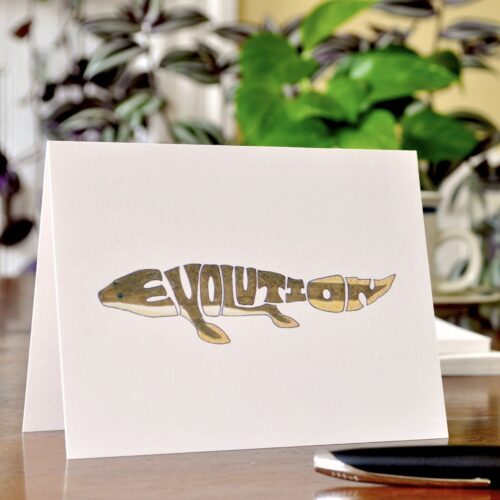
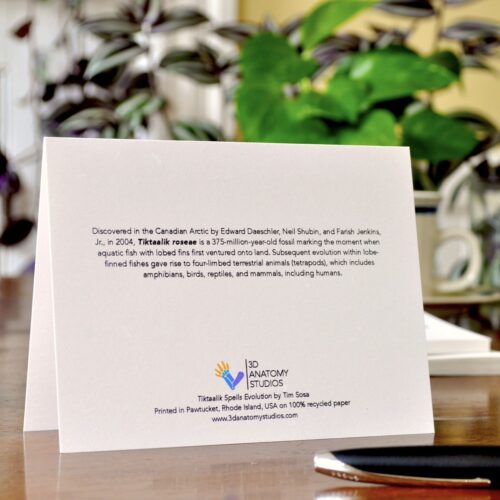
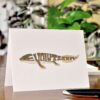

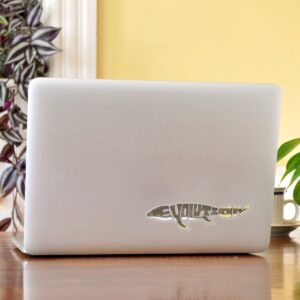
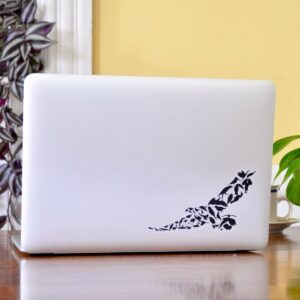
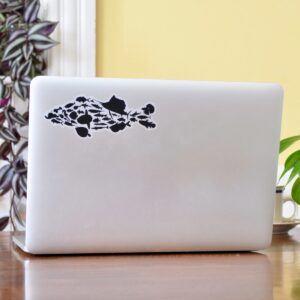
Reviews
There are no reviews yet.